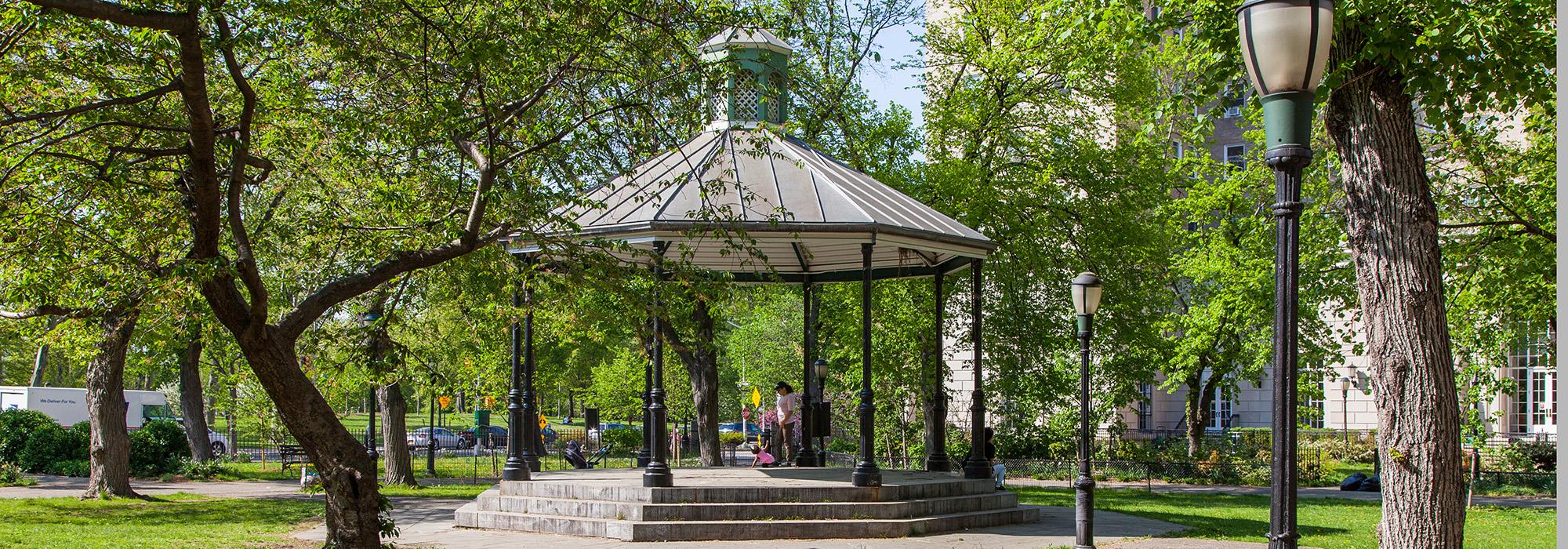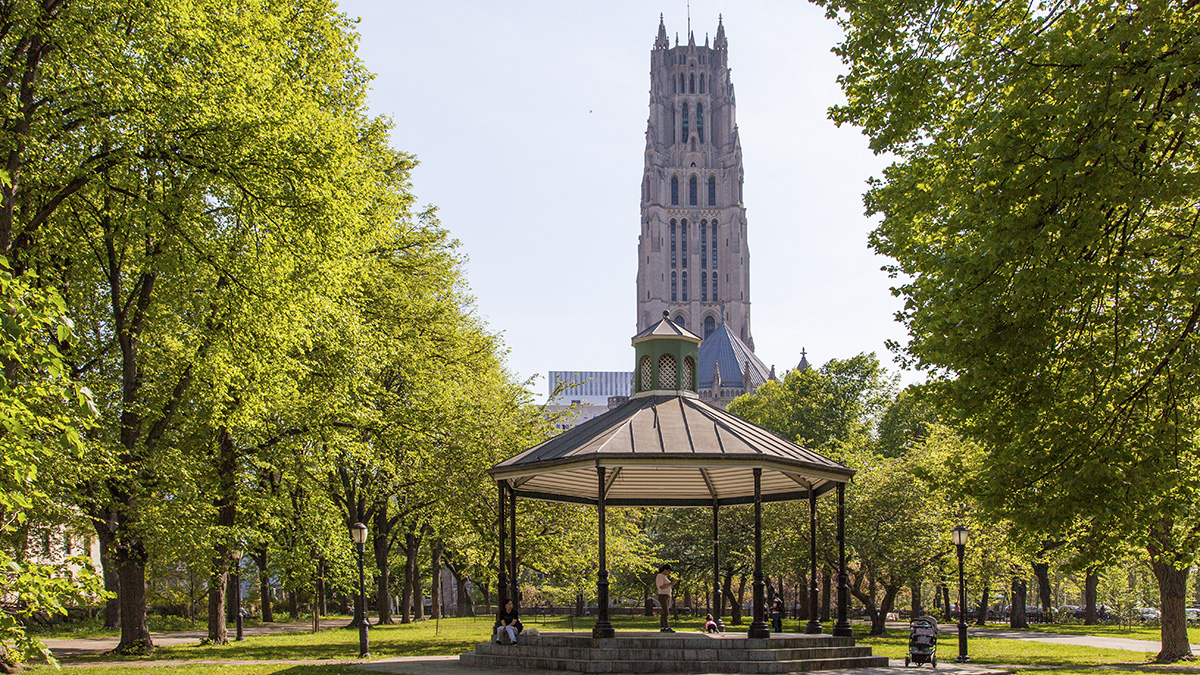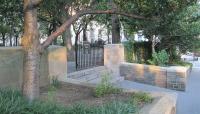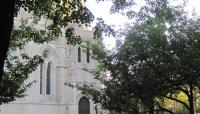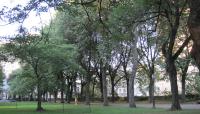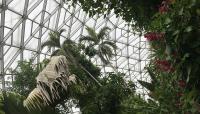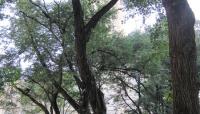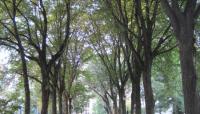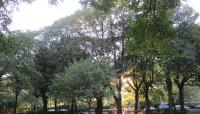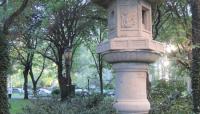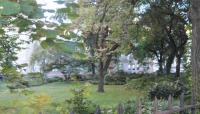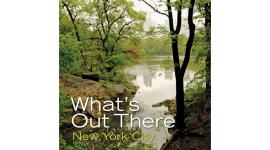Landscape Information
Conceived in 1896 as an addition to Riverside Park, this two-acre park was sited on land donated by John D. Rockefeller, Jr. overlooking the Hudson River. In 1912 over 2500 cherry trees were planted as a gift from Japan, a gesture of friendship which also included the donation of 20,000 trees to Washington, D.C. Their placement adjacent to Grant’s Tomb in a plan designed by Charles Downing Lay commemorates the former President’s diplomatic visit to Japan in 1879. The cherry trees were supplemented with Ginkgo and Styrax japonica to add a more Japanese character to the park.
In 1928 Rockefeller offered to redesign the park to improve the setting for the newly-built Riverside Church and International House, both of which he funded. He commissioned Olmsted Brothers represented by Frederick Law Olmsted, Jr. to transform the rolling hilltop into a flat and formal landscape. This effort required a massive retaining wall along Claremont Avenue, modeled on the ruins of Kenilworth Abbey and made from local stone. Completed in 1934, the Olmsted plan abandoned Lay’s curvilinear paths in favor of formal paths, promenades, and a double allée of linden trees that accented a new north-south axis connecting Riverside Church and International House, while retaining some of the original Japanese cherry trees. In 1946 two small play areas were added, and in 1960 a Japanese lantern was donated by the City of Tokyo. In 1981 Quennell Rothschild Associates worked on a renovation for the park, which included the design of a play area, the construction of a performance space, and the planting of lindens, barberry, and Japanese cherry trees. The park was renovated in 1986 to clear overgrown views and reestablish Olmsted’s overall planting plan.



